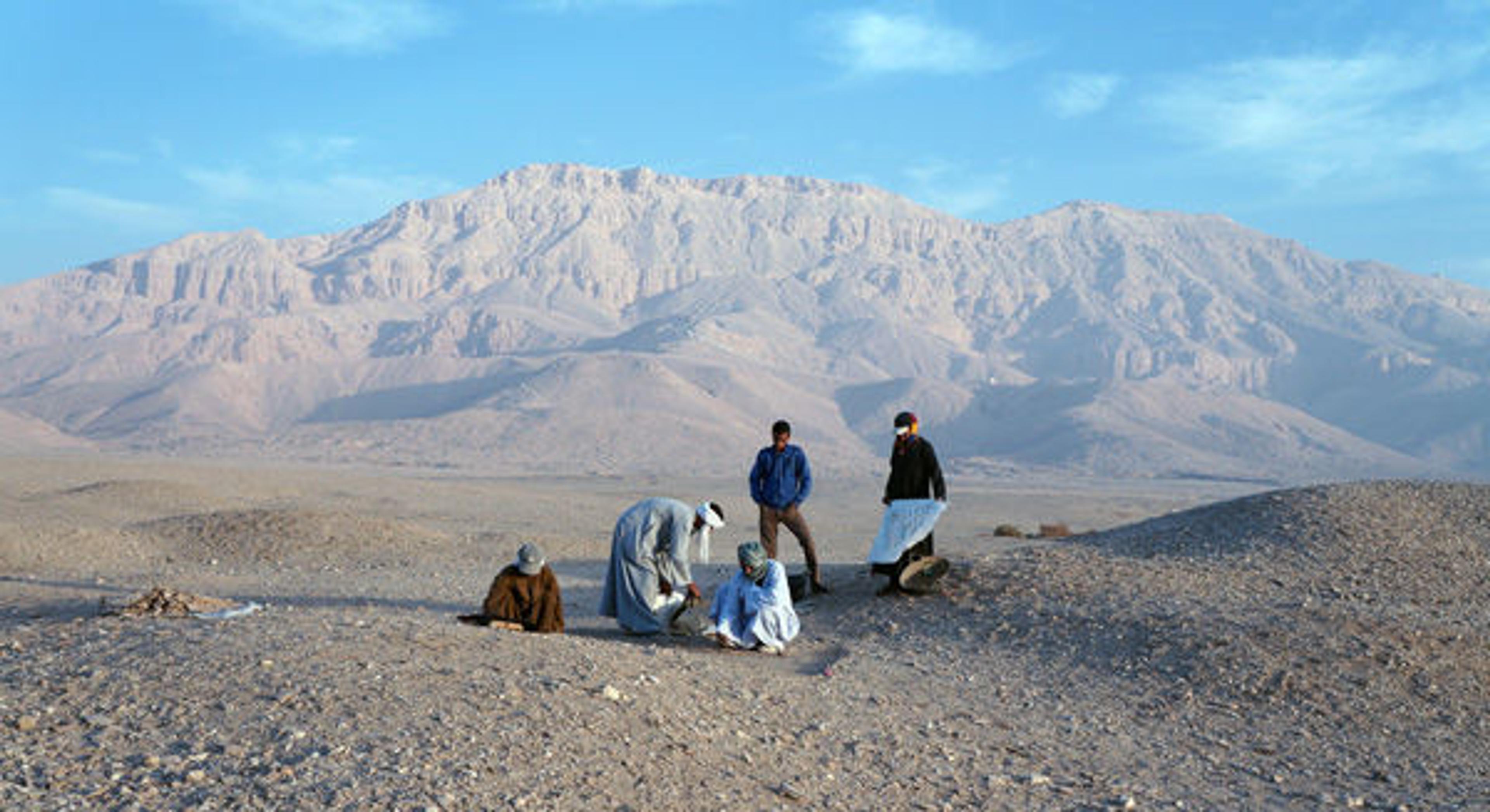The Met's Joint Mission to Malqata

Excavation work in progress at Malqata, February 5, 2015. Photo courtesy of the author
«The remains of the festival city of Malqata are located on the west bank of the Nile, about 430 miles south of Cairo, opposite the modern city of Luxor (usually referred to by Egyptologists as Thebes). The festival city dates to the time of the pharaoh Amenhotep III, who reigned during the second half of Dynasty 18, during Egypt's New Kingdom. This pharaoh was the father of Akhenaten, and very likely the grandfather of Tutankhamun.»
In the thirtieth year of his reign (ca. 1360 b.c., almost 3,400 years ago), Amenhotep III celebrated a jubilee called the heb-sed (or sed-festival). For this elaborate ceremonial event he undertook an ambitious building project that included a huge harbor at the edge of the desert (the Birket Habu). At the northwest corner of this harbor, the king's architects designed a festival city that included ceremonial structures, royal palaces, and administrative buildings. Bordering the large official structures, several villages were established for housing the workers, artisans, and servants who supplied labor and goods for the festival. The ancient name for this city was "The House of Rejoicing."
After the festival, which lasted a month or more, the entire city was abandoned until the thirty-fourth year of Amenhotep III's reign, when the king celebrated a second heb-sed. At this time several new structures, including a temple dedicated to the Theban god Amun, were built. The king celebrated a third jubilee two years later, at which point the existing buildings were refurbished.

Map of the palace city of Amenhotep III at Malqata, created by Joel Paulson using plans from the Egyptian Expedition archives and satellite imagery courtesy of Digitalglobal and MapMart, Inc.
The ancient structures of Malqata have been studied by Egyptologists for more than a century, and a number of archaeological expeditions have excavated at the site. The most ambitious of these was funded by The Metropolitan Museum of Art, which conducted six seasons of field work between 1910 and 1920. At the end of each season, the finds were divided between the Museum and the Egyptian Antiquities Service (or Service des Antiquités de l'Egypte, as it was known then). The Museum's share of these finds are on view in galleries 119 and 120 in the Lila Acheson Wallace Galleries of Egyptian Art.

Menat Necklace from Malqata, ca. 1390–1353 B.C. New Kingdom, Dynasty 18, reign of Amenhotep III. Faience, bronze or copper alloy, glass, agate, carnelian, lapis lazuli, turquoise; l. of counterpoise 14.7 cm (5 13/16 in). The Metropolitan Museum of Art, New York, Rogers Fund, 1911 (11.215.450)
The Joint Expedition to Malqata, which began work at the site in 2008, is co-sponsored by The Metropolitan Museum of Art and The Ancient Egyptian Heritage and Archaeology Fund. Our work is carried out in cooperation with the Egyptian Ministry for Antiquities and Heritage. This year the expedition is exploring several previously unexcavated areas and carrying out conservation work on the king's palace. Readers can follow the Joint Expedition's activities on our blog, iMalqata, in which we document our team's progress while working in the field.
More information on the Museum's early excavations at Malqata can be accessed on The Met Around the World and Archaeological Fieldwork—Malqata, Egypt.
Catharine Roehrig
Catharine H. Roehrig is Curator Emerita in the Department of Egyptian Art.